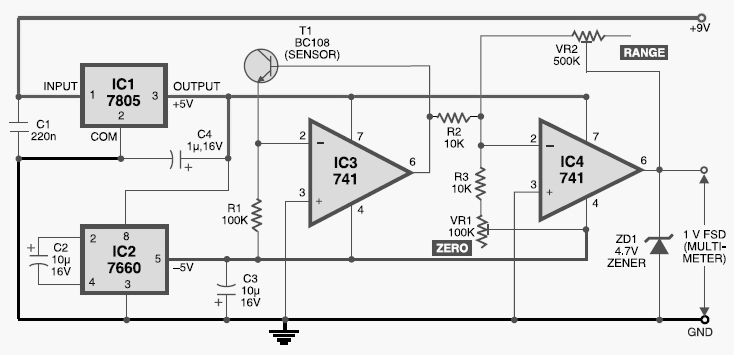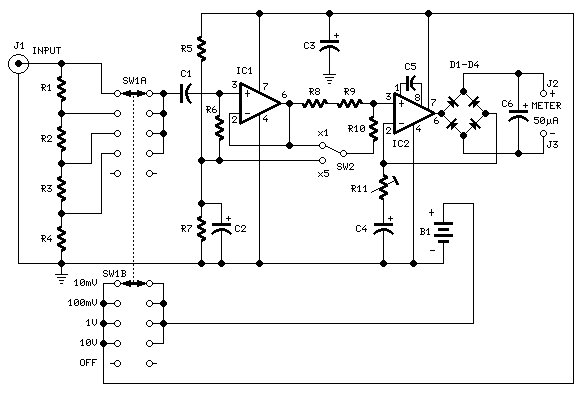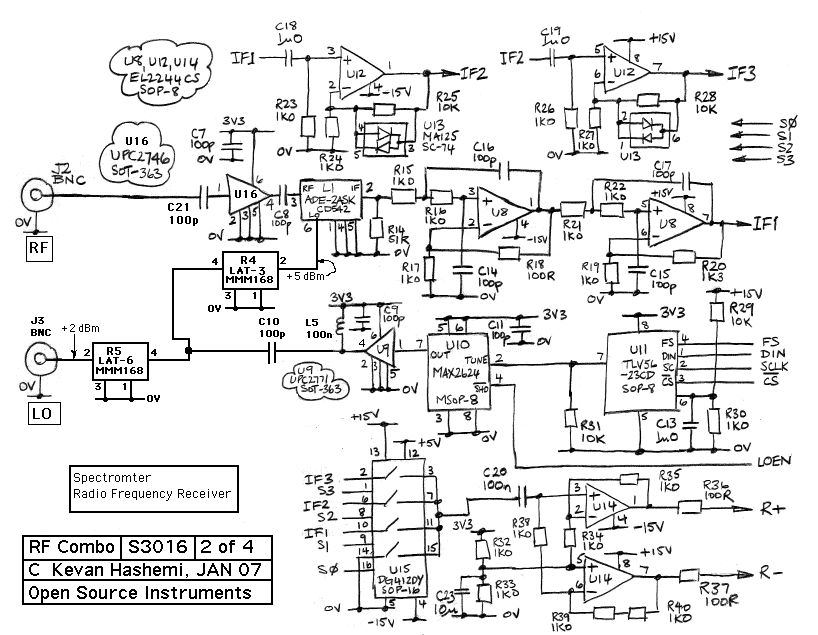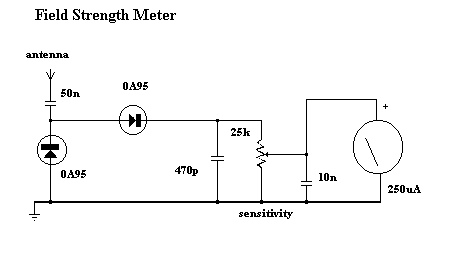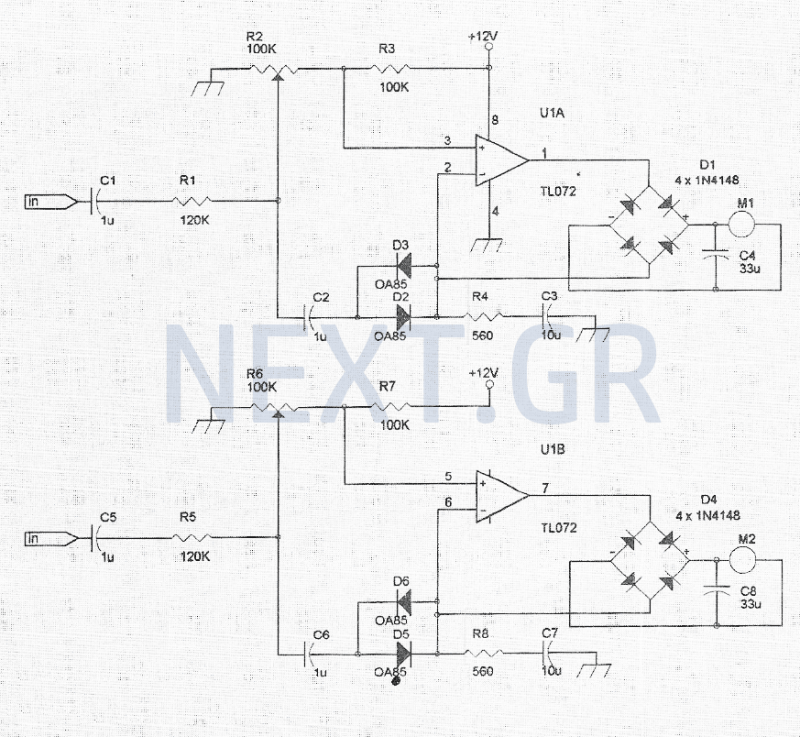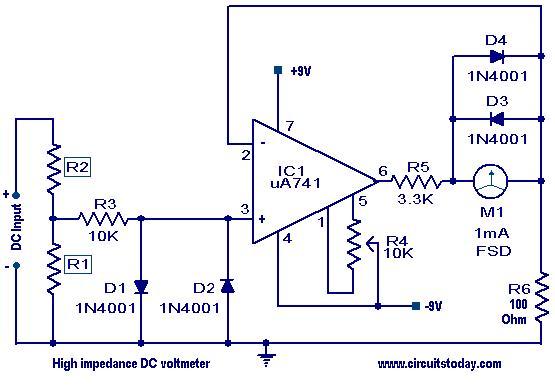
pH METER

The Beckman model W industrial-type pH meter is a direct current (DC) amplifier designed for measuring the potentials generated by pH-sensitive electrodes. The output is capable of driving most recorders. Resistor R32 is utilized exclusively with the 4 to 14 pH meter range, while resistor R33 is designated for use with the -1 to 9 pH meter range. Reference: G. C. Car, "Industrial Instrument Servicing Handbook," McGraw-Hill, N.Y., 1960, p. 7-4.
The Beckman model W pH meter employs a DC amplifier configuration to accurately measure the voltage produced by pH-sensitive electrodes, which respond to the hydrogen ion concentration in a solution. This measurement is critical in various industrial applications, including chemical processing, water treatment, and laboratory analysis. The output signal from the amplifier is designed to be compatible with a wide range of recording devices, allowing for the continuous monitoring of pH levels.
The circuit architecture of the pH meter includes a high-impedance input stage to minimize loading effects on the pH electrode, ensuring accurate readings. The use of resistors R32 and R33 serves to calibrate the amplifier for specific pH ranges, which is essential for maintaining measurement accuracy across different conditions. R32 is specifically tailored for the 4 to 14 pH range, while R33 is optimized for the -1 to 9 pH range, allowing the instrument to be versatile and applicable in various scenarios.
In addition to the basic amplifier circuit, the design may incorporate filtering components to eliminate noise and enhance signal integrity. This is particularly important in environments where electromagnetic interference (EMI) could affect the accuracy of pH measurements. The overall design of the Beckman model W emphasizes reliability and precision, making it a valuable tool in industrial settings where pH monitoring is critical to process control and quality assurance.Beckman model W industrial-type pH meter is d-c amplifier designed for measuring potentials generated by pH-sensitive electrodes. Output will drive most recorders. R32 is used only with 4 to 14 pH meter, and R33 only with -1 to 9 pH meter. -G. C. Car. roll, "Industrial Instrument Servicing Handbook, " McGraw-Hill, N. Y. , 1960, p 7-4. 🔗 External reference
The Beckman model W pH meter employs a DC amplifier configuration to accurately measure the voltage produced by pH-sensitive electrodes, which respond to the hydrogen ion concentration in a solution. This measurement is critical in various industrial applications, including chemical processing, water treatment, and laboratory analysis. The output signal from the amplifier is designed to be compatible with a wide range of recording devices, allowing for the continuous monitoring of pH levels.
The circuit architecture of the pH meter includes a high-impedance input stage to minimize loading effects on the pH electrode, ensuring accurate readings. The use of resistors R32 and R33 serves to calibrate the amplifier for specific pH ranges, which is essential for maintaining measurement accuracy across different conditions. R32 is specifically tailored for the 4 to 14 pH range, while R33 is optimized for the -1 to 9 pH range, allowing the instrument to be versatile and applicable in various scenarios.
In addition to the basic amplifier circuit, the design may incorporate filtering components to eliminate noise and enhance signal integrity. This is particularly important in environments where electromagnetic interference (EMI) could affect the accuracy of pH measurements. The overall design of the Beckman model W emphasizes reliability and precision, making it a valuable tool in industrial settings where pH monitoring is critical to process control and quality assurance.Beckman model W industrial-type pH meter is d-c amplifier designed for measuring potentials generated by pH-sensitive electrodes. Output will drive most recorders. R32 is used only with 4 to 14 pH meter, and R33 only with -1 to 9 pH meter. -G. C. Car. roll, "Industrial Instrument Servicing Handbook, " McGraw-Hill, N. Y. , 1960, p 7-4. 🔗 External reference
